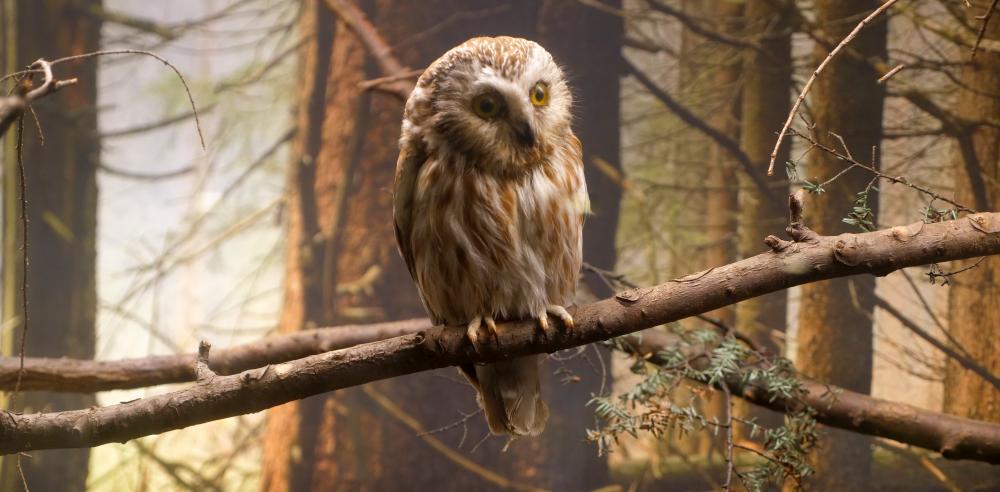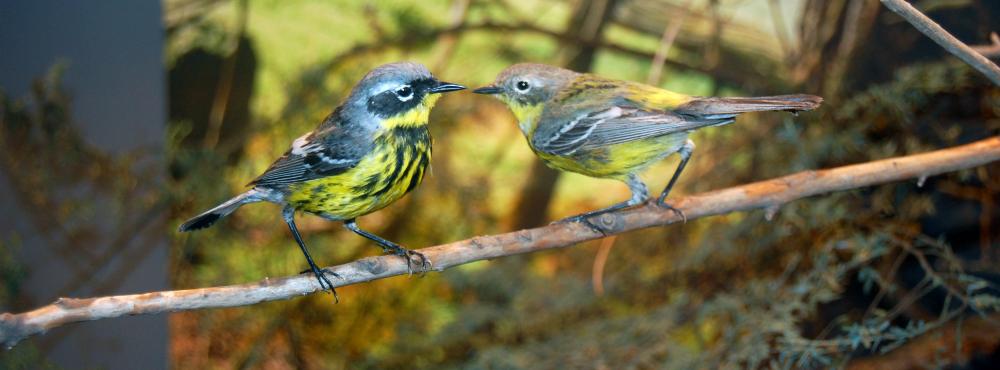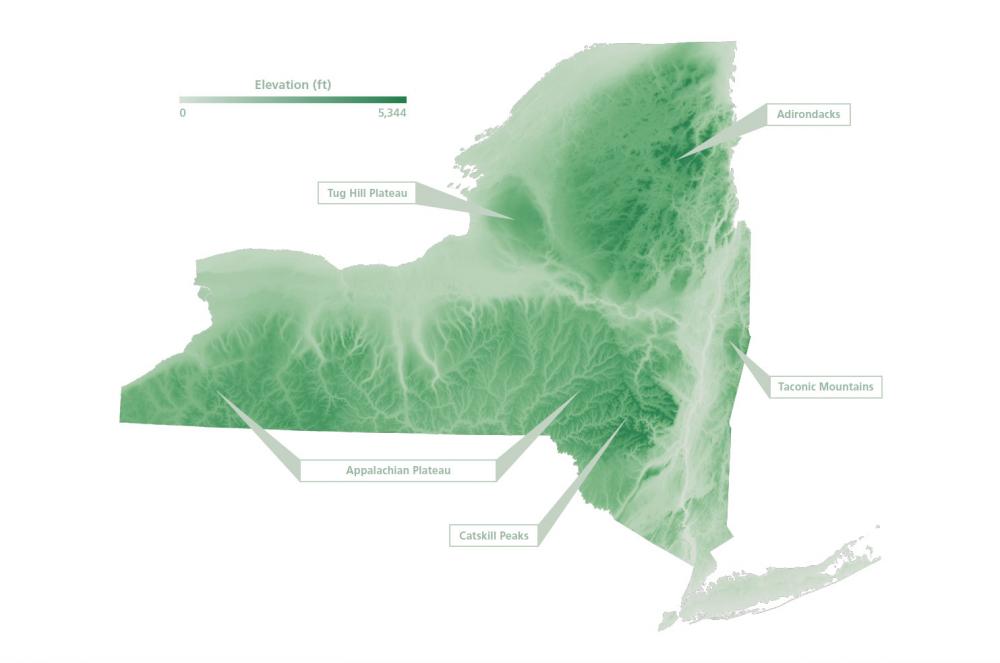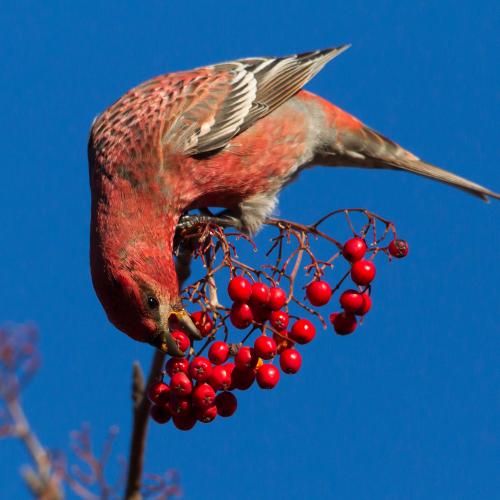
Evergreen Forests
New York’s evergreen forests are dominated by cone-bearing trees such as spruce, balsam fir, hemlock, tamarack, and white pine. These cold, wet habitats are found in New York at high elevations: the Adirondack Mountains, Tug Hill Plateau, Taconic Highlands, Appalachian Plateau, and the Catskill Peaks.
Several bird species that live in evergreen forests breed in New York only in the Adirondacks and Catskills above 3,000 feet elevation. Since 1894 the public land in these forest preserves has been protected by the New York State Constitution, which declares that they “shall be forever kept as wild forest lands.”

Finch Flocks Follow Fluctuating Foods
Members of the finch family (Fringillidae) are seed eaters with beaks that have evolved into different shapes and sizes to specialize in different kinds of seeds. The beak of the Red Crossbill has crossed mandibles that the birds use to pry seeds out of the cones of spruce, pine, tamarack, and hemlock trees. The Pine Grosbeak is more of a generalist; its beak can crush hard seeds and also eat fleshy fruits.
In winter, finch flocks will move long distances in search of areas with an abundant fruit or cone supply. Occasionally, large groups of finches will “irrupt,” shifting outside their typical range to the north of New York and will take up residence in our evergreen forests. These irruptive finches will remain in one area until food becomes scarce and then will move on again.


Evergreen Forests in New York
Evergreen forests are found in several areas of high elevation in New York, especially the Catskill Forest Preserve (287,500 acres of forested public land) and the huge Adirondack Forest Preserve (2.6 million acres of forested public land!).






